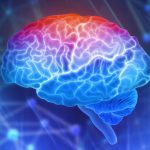When we first meet new post-concussion syndrome (PCS) patients at Northoak Chiropractic, it is pretty common for them to be wearing sunglasses and baseball caps to shield themselves from bright lights. They may even be wearing earplugs to reduce exposure to sound.
If you’ve experienced a concussion in the past year or more and you’re relying on these types of strategies to cope with your sensitivity, you do have alternatives available.
Watch the sixth video in our Post Concussion Syndrome series to learn more about how light and sound sensitivity can be addressed by PCS patients:
This post will explain how light and sound sensitivities are caused by issues in the autonomic nervous system of the brain. We will also discuss some of the treatment options available to PCS patients and suggest a few tips for dealing with your sensitivity in the meantime.
Please send us a message if you have any questions about light and sound sensitivity.
The Causes of Light & Sound Sensitivity
The Autonomic Nervous System
If you’re a PCS patient who’s suffering from light and sound sensitivity, then the problem is most likely caused by issues in your autonomic nervous system, specifically the loss of the ability to inhibit sympathetic responses.
The autonomic nervous system regulates the automatic processes of our body — things that we don’t consciously control like digestion, heart rate, blood pressure, sleep, temperature regulation, and even the flow of blood in the body. The autonomic nervous system is made up of two halves: (1) the parasympathetic system, and (2) the sympathetic system.
What does the parasympathetic system do?
- Rest, recovery, and refueling system
- Located in the lower brainstem (the pons and the medulla)
- Responsible for digestion, relaxation, and sleep
- Decreases heart rate and blood pressure
- Constricts pupils for sleep and stimulates flow of saliva around food
What does the sympathetic system do?
- Fight-or-flight system
- Located in the upper brainstem (the midbrain) and the spinal cord
- Responsible for putting us into a state of awareness so we can react to danger
- Increases heart rate and blood pressure
- Sends more blood to muscles of arms and legs for increased strength
- Constricts superficial muscles and blood vessels to decrease bleeding
- Causes adrenal glands to secrete chemicals to raise our level of alertness
- Opens pupils wider and raises our eyelids to take in more of our surroundings
- Relaxes tiny muscles on bones of our inner ear to make hearing more acute
How PCS Symptoms are Caused By Sympathetic System Effects
You may have noticed that many of the effects produced by the sympathetic system are similar to the symptoms experienced by PCS patients. Here are a few examples:
| Sympathetic System Effect | PCS Symptom |
| Increased heart rate and blood pressure | Racing heart and lightheadedness |
| Constriction of superficial blood vessels | Cold, sweaty hands and/or feet |
| Secretion of chemicals by adrenal glands | Anxiety and insomnia |
| Pupil dilation and increased hearing acuity | Light and sound sensitivity |
Both the sympathetic and parasympathetic systems can inhibit each other’s normal function, which is calledreciprocal inhibition. They can also be inhibited by higher cortical areas of the brain — in other words, by our conscious mind. For example, we can consciously choose to remain calm in a stressful situation or stay awake if we’re trying to finish a term paper the night before it’s due.
This ability to inhibit our sympathetic and parasympathetic responses is what allows us to be civilized in difficult situations. However, when we have a brain injury, such as a concussion, we can lose some of our ability to inhibit the sympathetic system and/or the parasympathetic system. As a result, one system or the other can become dominant.
This state of affairs is what causes a variety of issues in PCS patients, ranging from light and sound sensitivity to some of the others listed above.
Tips for Dealing with Light Sensitivity
At Northoak, we understand that strengthening neural pathways and recovering from PCS does not happen overnight. If you’re experiencing acute light sensitivity, here are a few tips for dealing with this condition:
- Wear green glasses — Green light is the least likely to trigger a headache in light sensitive patients. If you’re okay with adopting a fun, new style, this can be a great solution. You can purchase green glasses online here.
- Add a green photographic film filter to your computer screen — LED computer screens control their brightness by switching LEDs on and off faster than you can consciously see. This invisible flicker can often trigger headaches in PCS patients, so it’s better to set your computer screen to its highest brightness and place a green filter over the screen. You can purchase green filter paper here.
- Buy fluorescent lighting filters for your office— Fluorescent lights have a similar flicker to LEDs. Fluorescent filters can reduce the amount of blue light, but will not fully eliminate the flicker. If the flicker continues to bother you, we recommend avoiding these types of lights as much as possible.
Treatment for Light & Sound Sensitivity
When you are suffering from light and sound sensitivity, as a PCS patient, you need to strengthen the damaged neural pathways of the brain, in order to increase your ability to inhibit sympathetic activity.
At Northoak Chiropractic, we use a variety of targeted exercises and brain activities to drive neuroplasticity in affected areas and restore normal brain function. Every case is different and we only recommend using these exercises after an in-depth examination of your specific condition and under the supervision of a trained professional.
If you’re currently suffering from PCS symptoms, you can call us at (905) 338-5951 or make an appointment online to get started with treatment today.


